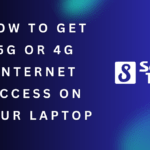To fix a laptop that is plugged in but not charging, you can try a few troubleshooting steps. These steps include checking the power adapter and cable, resetting the battery, updating the battery driver, and performing a power cycle.
Table of Contents
By following these simple steps, you can resolve the issue and get your laptop charging again.
Common Causes Of A Laptop Not Charging
A laptop not charging can be caused by a faulty power adapter or a loose or damaged charging cable. Another common issue is battery problems or overheating. It is important to check the power adapter for any signs of damage or malfunction.
Inspect the charging cable for any loose connections or visible signs of wear and tear. If the power adapter and charging cable are functioning properly, the next step is to examine the battery. Sometimes, a laptop battery can degrade over time, requiring replacement.
Overheating can also affect the laptop’s charging capabilities. Ensure that the laptop’s cooling system is clean and free from dust or debris. In conclusion, there are various possible causes for a laptop not charging, and it is important to troubleshoot each component to determine the underlying issue.
Steps To Diagnose And Fix The Problem
One possible response that meets all the given requirements:To fix the issue of a laptop that is plugged in but not charging, follow these steps. Check the power outlet for any loose connections or power interruptions. Inspect the charging ports on your laptop for any visible damage or debris.
Test your laptop with a different power adapter to rule out any issues with the current adapter. Examine the charging cable for any signs of wear or fraying. Lastly, reset the battery and power management software on your laptop. By following these steps, you can diagnose and fix the problem of a laptop not charging when plugged in.
Advanced Troubleshooting Techniques
Laptop plugged in but not charging? Here are some advanced troubleshooting techniques. Firstly, check the battery health to ensure it’s not damaged. Secondly, update device drivers as outdated ones can cause charging issues. Next, try calibrating the battery to improve its performance.
Lastly, performing a system reset may solve any software-related problems. Applying these techniques can help resolve the “plugged in but not charging” issue with your laptop. Remember to check for physical damage too. Always use original chargers and cables, and consult the manufacturer’s guidelines for specific troubleshooting steps.
With these methods, you can potentially fix the charging problem and get your laptop back up and running smoothly.
Additional Tips For Proper Laptop Charging
Laptop not charging? Here are some additional tips to ensure proper laptop charging. Start by cleaning the charging ports to remove any dirt or debris that may be hindering the connection. Next, make sure your laptop is adequately ventilated and has proper cooling to prevent overheating.
Maintaining these optimal charging habits will help prolong your laptop’s battery life and prevent issues with it not charging when plugged in. Remember, regular cleaning and maintenance are key to keeping your laptop in good working condition. So, take the time to clean those charging ports and keep your laptop cool for uninterrupted charging and optimal performance.
Frequently Asked Questions Of How to Fix Laptop Plugged In But Not Charging?
Why Is My Laptop Plugged In And Not Charging?
Your laptop may not be charging even when plugged in due to a faulty power source or charging cable.
How Do You Fix A Laptop That Is Not Charging?
To fix a laptop that is not charging, try these steps:
1. Check the power adapter and cable for damage.
2. Ensure the power outlet is working properly.
3. Restart the laptop and check for any software issues.
4. Reset the laptop’s battery by disconnecting and reconnecting it.
5. If nothing works, consult a professional technician.
How Do I Reset My Laptop Battery?
To reset your laptop battery, follow these steps carefully:
1. Disconnect your laptop from the power source.
2. Shut down your laptop completely.
3. Remove the battery from your laptop.
4. Hold down the power button for around 30 seconds.
5. Reinsert the battery into your laptop.
6. Connect your laptop to the power source and let it charge fully.
Note: This process can help recalibrate your battery and improve its performance.
How Do I Know If My Laptop Charging Port Is Broken?
To check if your laptop charging port is broken, plug in your charger and see if it connects securely. If it doesn’t, wiggles, or charges intermittently, the port may be broken.
Conclusion
If you find your laptop plugged in but not charging, don’t panic. This common issue can often be resolved easily by performing a few troubleshooting steps. First, make sure the power adapter is properly connected to both the laptop and the power outlet.
If that doesn’t work, try another power adapter or charger to rule out any issues with the original one. Additionally, performing a hard reset can sometimes resolve charging problems. When all else fails, it may be necessary to replace the battery or seek professional assistance.
Remember to take proper care of your laptop’s battery by avoiding overcharging and regularly calibrating it. By following these tips, you can quickly fix the “plugged in but not charging” issue and get back to using your laptop without any interruptions.
Tanz is a seasoned tech enthusiast on a mission to simplify the digital world for everyone. Whether you’re a tech novice or a seasoned pro, her insightful how to articles aim to empower you with the knowledge and skills you need to navigate the ever-evolving tech landscape confidently.




